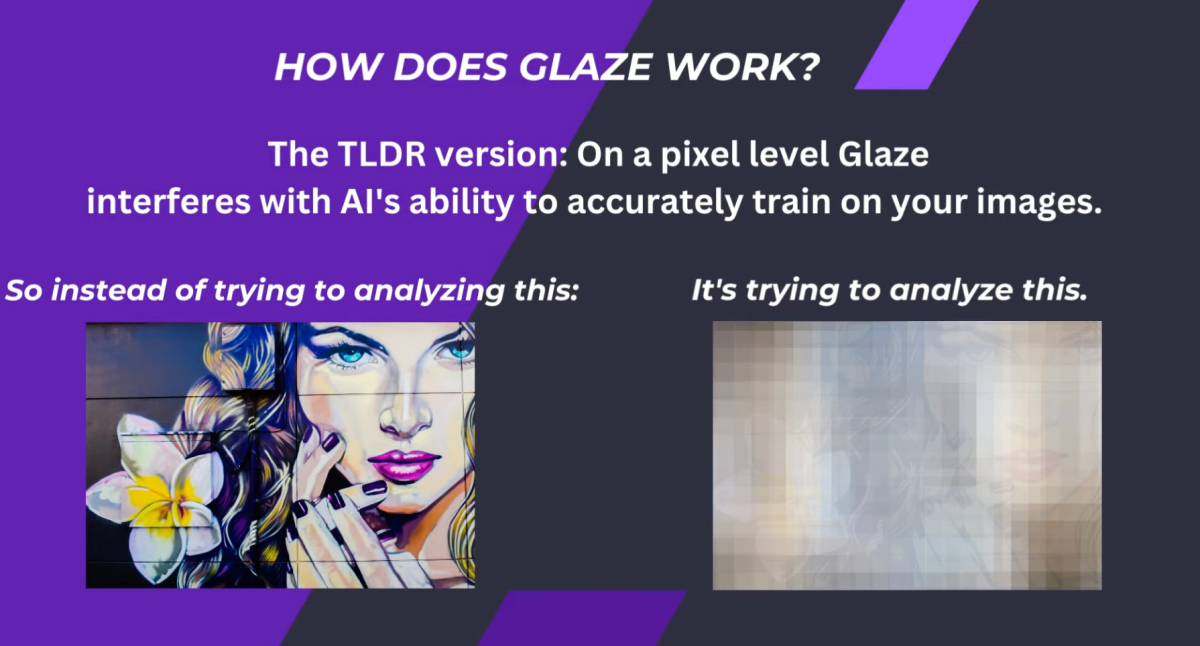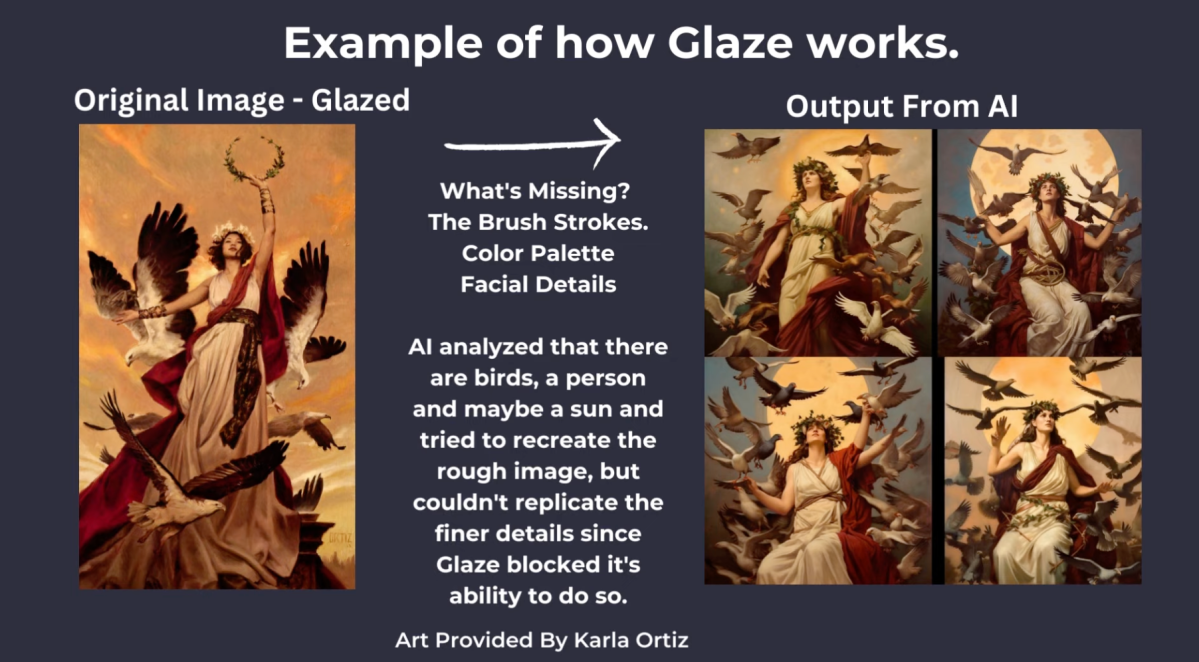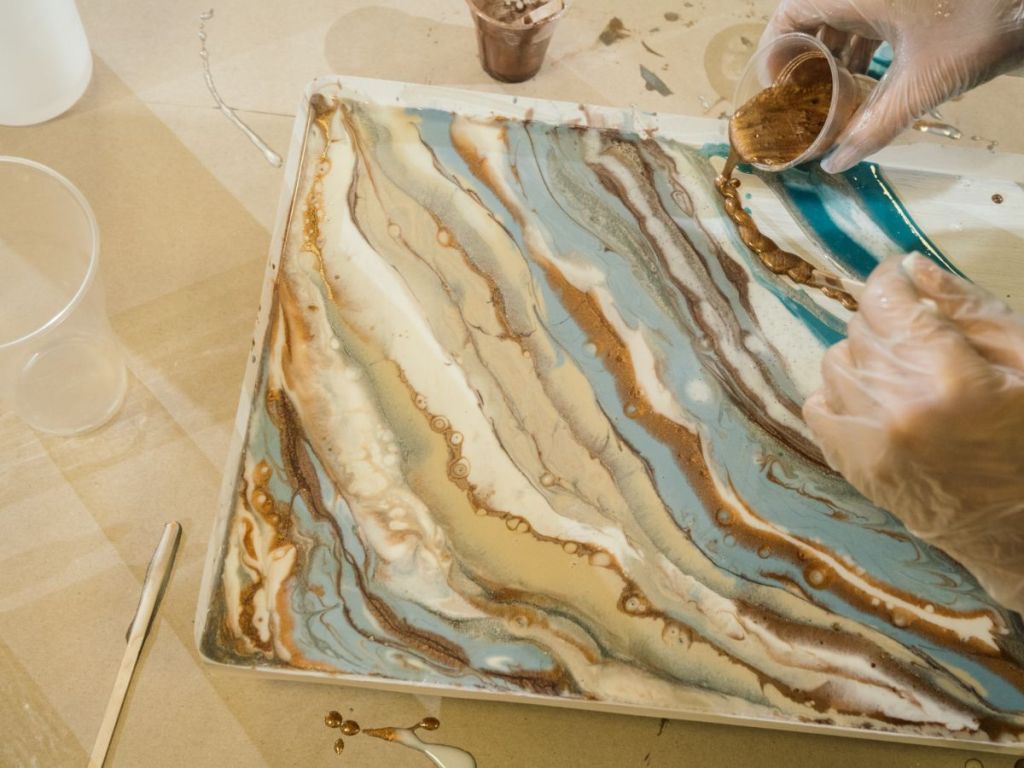A couple of weeks ago, we published a story about a digital artist from Japan falling victim to an AI scam. The artist’s rough sketch of an anime character was stolen by an unidentified user, completed using AI tools, then resold to a third party.
Our TikTok clip of the story went viral, and fellow artists on the platform quickly came together under the comments advising each other to make use of the new software Glaze.
No, this is not related to the popular TikTok phrase about “glazing”. If you’re an artist who’s never heard of Glaze, this article is for you.
What Is Glaze?
Glaze is a software designed to protect a human artist’s work from being scraped by AI models if the work is shared online.
Glaze was launched in March 2023. As AI seems to be creeping into nearly every aspect of the arts, and more artists are becoming unwitting targets of AI models, Glaze can be seen as a solution to fight back.
The software is developed by a team of scientists at the University of Chicago (“UChicago”) led by Professor Ben Zhao, a computer scientist, and Shawn Shan, a PhD student at UChicago’s SAND Lab.
A group of human artists, including Karla Ortiz who worked with Marvel Studios and HBO, and animator Nathan Fowkes, who worked with DreamWorks and Disney, was also involved in the development of Glaze.
There is also a web interface for Glaze called WebGlaze, but the platform is invite-only for now. Professor Zhao tells us WebGlaze currently has around 2,000 users, and that the number of artists in the queue waiting to use WebGlaze is “pretty steady”.
How Does Glaze Work?
According to a YouTube video shared by Zhao explaining the software, Glaze works by interfering with an AI’s ability to “accurately train” on an artist’s images “on a pixel level”.
For example, when an artist uploads a painting onto Glaze’s software, the program “shifts” around the painting’s elements on a pixel level. Researchers at Glaze describe this process as adding a “cloak” to confuse AI art generators. The result of this “cloaking” is that it disrupts an AI model’s scraping process when it is scanning for artwork on the internet.
“The general architecture for how image models work, on a high level, is similar. The base training set is also very similar, which is why some properties carry across different models. So, Glaze is able to work across multiple models [such as Midjourney and Stable Diffusion] without us having to customise Glaze for every single model.” Professor Zhao tells The Chainsaw.

Glaze claims that the following disruptions aren’t able to “break” its protective cloak:
- Screenshots and crops;
- Reformatting, resizing and resampling;
- Compressing;
- Smoothing out an artwork’s pixels;
- Adding “noise” to images.
But don’t get too excited: using Glaze doesn’t mean your artwork is 100% bulletproof against AI. Zhao tells Business Insider that art that has been glazed can still be fed to AI models, but it just won’t be 100% accurate.
How To Use Glaze
Glaze is free to use, but it is currently only available for download as a software for Windows and MacOS.
However, before you run Glaze, there are a few steps you need to complete.
First, to run the software on your computer, your device needs to have one of several selected Nvidia GPUs from this list. Next, you have to install the Nvidia CUDA Toolkit from here. Once both steps have been completed, you can download Glaze.
Protecting creatives
Here is an example of an artist whose work has been cloaked with Glaze in collaboration with the team at UChicago:

When you use Glaze to “cloak” your work, Glaze cautions that in some cases, the resolution of your work might change a little.
Sometimes, it does seem that AI might really be taking over the creative industry, given the numerous scams, thefts and ongoing lawsuits involving the technology. With the exception of Glaze, there appears to be a severe lack of tech services or products developed with the intention of protecting artists.
Protecting creatives
“Companies are not interested in protecting artists – their tools depend entirely on ‘stealing’ the IP (intellectual property) of these artists. Protecting that IP would destroy their business model,” Dr. Toby Walsh, Chief AI Scientist at UNSW, tells The Chainsaw.
The Glaze team wrote: “We have been doing research in adversarial machine learning, and this was an exceptional opportunity to make a strong positive impact, because despite cries of ‘gatekeeping’ or ‘elitists’, the large majority of artists are independent, creative people who choose art because it is their passion, and generally barely make a living doing so; and because legal and regulatory processes can take years to converge, and might be too late to prevent generative AI from destroying the human artist community.”
“This is not just about AI models using artists’ work to train on their basic dataset, it’s also about what is done with these artworks afterwards. There are platforms where people trade, download, and share openly models that specifically mimic and individual artist… so Glaze is meant to protect artists from that,“ Professor Zhao adds.
Professor Zhao tells us that at present, Glaze has crossed 1.3 million downloads. So, artists, get on board now to protect your property.





